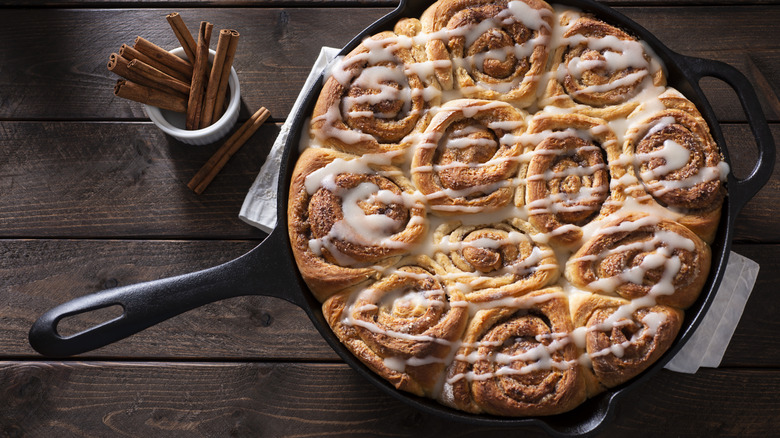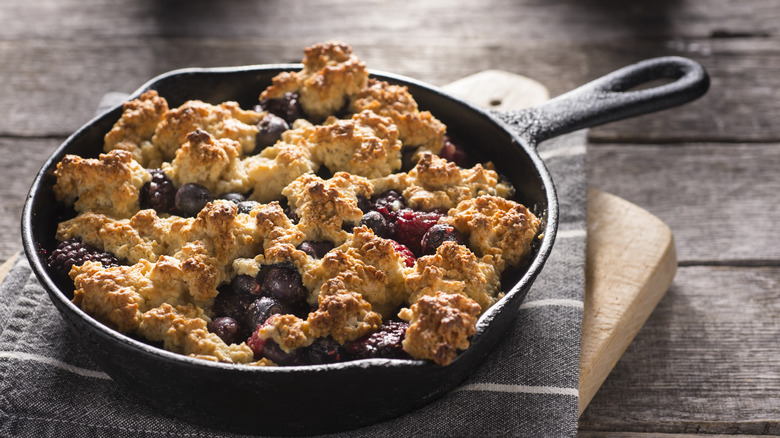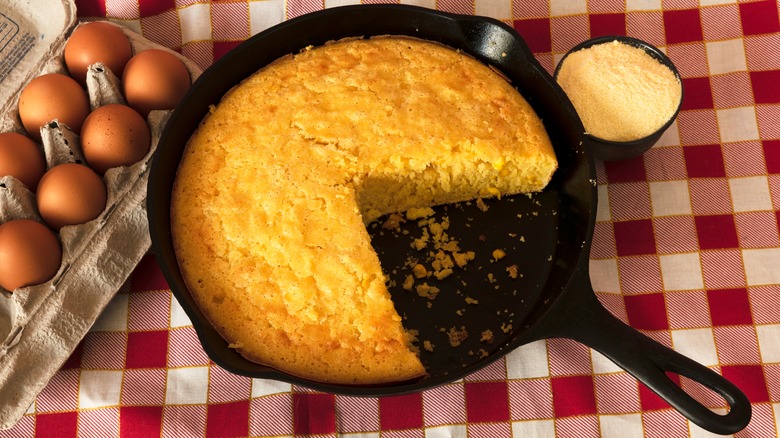The First Mistake You're Making When Baking With A Cast Iron
For those new to this type of cookware, using cast iron to prepare meals can be a little intimidating. However, the material is ideal for whipping up a variety of tasty recipes, including a whole world of baked goods. The key is to approach cast iron skillets with the right knowledge to ensure you're fully satisfied with the end result.
There are lots of common myths surrounding cast iron, such as the pan's inherent non-stick qualities and even heating ability. The truth is not all cast iron cookware lives up to these lofty claims, which is why it's so crucial to preheat the pan before getting started on your baking masterpiece. By preheating cast iron, baked goods are less likely to cling to the surface since they will develop an immediate sear. Also, preheating ensures that the entire surface of the pan maintains a consistent temperature, which is an essential aspect of achieving optimum doneness for bread, rolls, or other cast iron skillet recipes you didn't know you could make.
The science behind preheating cast iron
The water within food releases steam when heated in the oven, which can result in an unwanted soggy texture. By placing food into an already hot cast iron pan, the water released from food evaporates at a faster rate to develop the best possible texture for your baked goods. Instead of soft and mushy, your baked treats will come out crisp and satisfying.
It's all about the Maillard reaction, which is a name given to numerous distinct chemical reactions that enhance the flavor and texture of food. These reactions result from the heat applied to individual components within foods, such as sugar, which becomes deliciously browned and caramelized as a result. Preheating your pan ensures it achieves the high temperature necessary for browning, as a cold pan can potentially contribute to a lackluster result. That means the bottoms of your cast iron chocolate chip cookie bars will develop the perfect crispy texture to contrast with the gooey goodness inside.
Other best practices when using cast iron for baking
While preheating cast iron pans prior to using them is key for achieving perfectly browned baked goods, there are a few other tips to remember when baking with cast iron. In addition to evenly applying a coating of grease to the surface of the pan, topping the grease with a bit of flour is also helpful. This grease-flour combo will prevent baked goods, such as flavorful cast iron cornbread, from becoming hopelessly stuck in the pan, thereby making them easier to remove.
Keep in mind that cast iron is more effective at holding heat than other forms of cookware. As a result, baked goods may achieve peak doneness faster than if you were using a conventional baking sheet. That means it might be necessary to reduce baking time to avoid burning your delicious treats. This tip is especially pertinent when using a preheated pan, which can simultaneously boost the quality of recipes while shortening the standard baking time.


